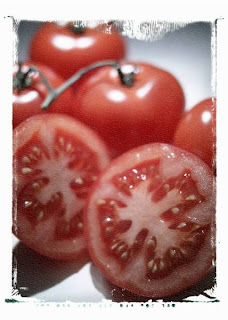Materials:
Cherry tomatoes (enough so each student gets ½ of a tomato)
Paper towels/napkins
Paper and pencils
One large tomato
A knife to cut food in half ahead of time
Activity:
- Explain to the students that today we are going to guess or estimate the number of seeds inside of a fruit or vegetable.
- Hand out ½ of a cherry tomato and paper towel/napkin to each student. Make sure that the students do not eat the tomato before completing the exercise.*
- Without actually counting the number of seeds, have students guess how many seeds are in their tomato half. Have them record the number on a piece of paper.

- Instruct students to count the seeds in their tomato.
- Have students record the actual number and figure out how close they were to their guess, allowing them to practice subtraction. Find out who was the closest.
- Have students compare the number of seeds in their tomato with a partner. Who has more seeds? How many seeds do they have all together?
- As a class, calculate the total number of seeds from all of the tomato halves. You can also calculate how many seeds one half of the room has compared to the other, how many seeds the girls had compared to the boys, etc. Each time students can either calculate the totals together as a class or do the addition on their own and then together as a class.
- Now ask students to guess how many seeds are in one large tomato. Record answers on the board or chart paper.
- Have students count the number of seeds in the tomato.
- Compare the number of seeds in the large tomato to the number of seeds in the cherry tomato halves and to the classes’ total number of cherry tomato seeds. Which has more?
Extension:
- Do the same activity with a different fruit/vegetable (ex: pumpkins, apples, peppers, watermelon, etc.)
- Have students calculate the mean (average), median (middle number), and mode (most frequent number) for the classes’ cherry tomato seeds























